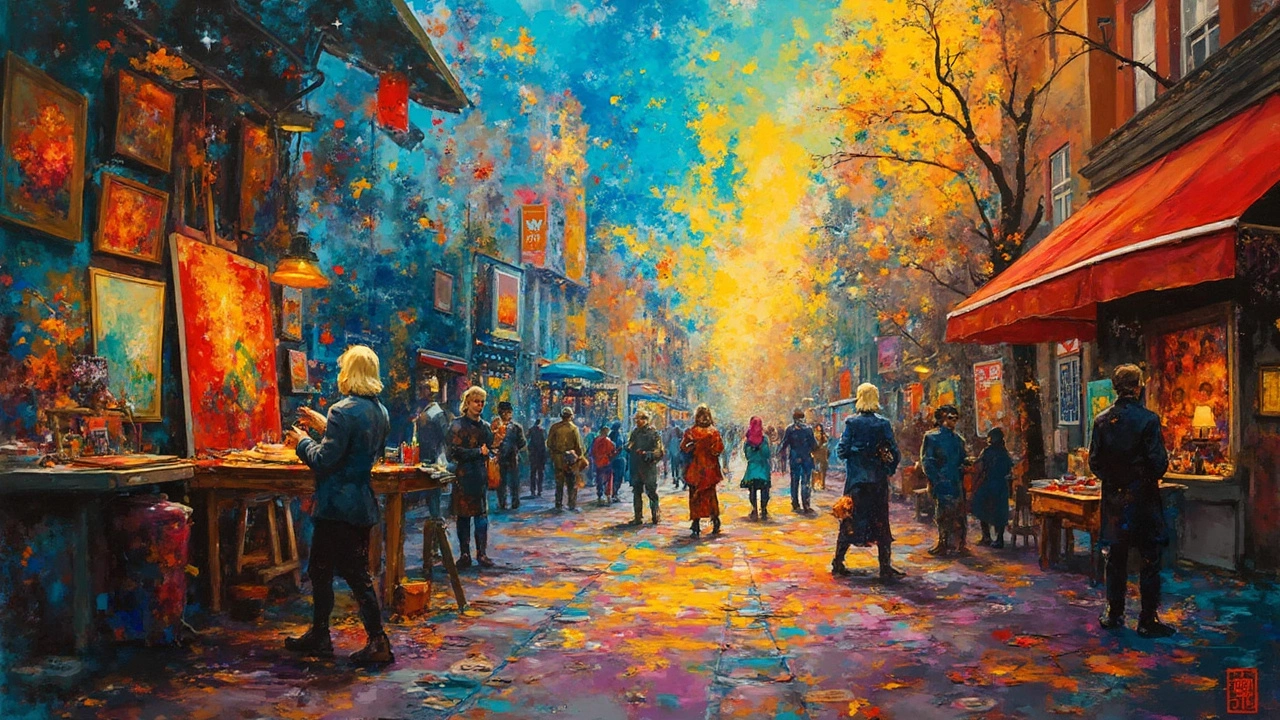Painting Styles – A Practical Guide to Understanding & Trying Different Techniques
When you pick up a brush, the style you choose shapes everything – the mood, the materials, even the time you spend. Knowing a few key styles helps you decide what feels right for a project, and it stops you from copying without purpose.
Why Knowing Painting Styles Matters
Each style comes with its own set of rules and freedoms. For example, abstract art focuses on feeling rather than exact shapes, while portrait painting demands attention to facial detail. When you match the style to the goal, the result looks intentional instead of messy.
Understanding styles also guides your material choices. Oil paints work well for classic realism because they blend slowly, whereas acrylics dry fast and suit bold, graphic work. Picking the right medium saves time and money – you won’t waste a 50ml tube of oil on a quick sketch you could have done with watercolor.
Popular Painting Styles to Try
Abstract – Start by choosing colors that match the emotion you want to convey. You don’t need a realistic reference; a simple shape or line can spark a whole composition. Try a quick wash, let it dry, then add splashes or scumbles for texture.
Portrait – Begin with light pencil lines to map the eyes, nose, and mouth. The eyes are the focal point, so spend extra time on them. Use thin layers of paint for skin tones and build up shadows gradually.
Landscape – Pick a limited palette that reflects the scene’s lighting – warm oranges for sunrise, cool blues for dusk. Apply the rule of thirds to place horizon and key elements, creating balance without over‑crowding the canvas.
Modern & Contemporary – These styles blur the line between “art” and “idea.” Look at current trends like digital collage, AI‑generated textures, or mixed‑media installations. You can start with a simple collage of magazine cut‑outs, then paint over them to add depth.
Sculpture‑Inspired Painting – Imagine a three‑dimensional object and translate its volume onto a flat surface. Use shading and directional strokes to suggest depth, as if you were carving the form with paint.
When you experiment, keep a short notebook of what works. Write down the style, the medium, the drying time, and any tricks you discovered. Over time you’ll notice patterns – perhaps you prefer the quick drying of acrylic for abstract work, or the slow blending of oil for portraits.
Don’t feel pressured to master a style before moving on. The goal is to build a toolbox of techniques you can pull from whenever a new project arrives. Mix elements – a portrait with abstract background, a landscape with modern geometric shapes – and you’ll create something uniquely yours.
Ready to try? Pick a style that excites you, gather the recommended materials, and set a timer for 30 minutes. Work without overthinking; the first pass is always the most honest. Finish with a quick critique: does the piece feel like the style you aimed for? Adjust, learn, and repeat.
By exploring these painting styles, you’ll understand why each exists, how to apply it, and where it fits into your own artistic journey. Happy painting!

14 Apr 2025
Ever wondered how Picasso fits into the world of abstract art? This article explores whether Picasso's works belong in the abstract art category, considering his unique style and impact. Discover fascinating facts about Picasso's famous pieces, his influence on modern art, and how his work plays with both abstraction and reality.
Continue reading...
